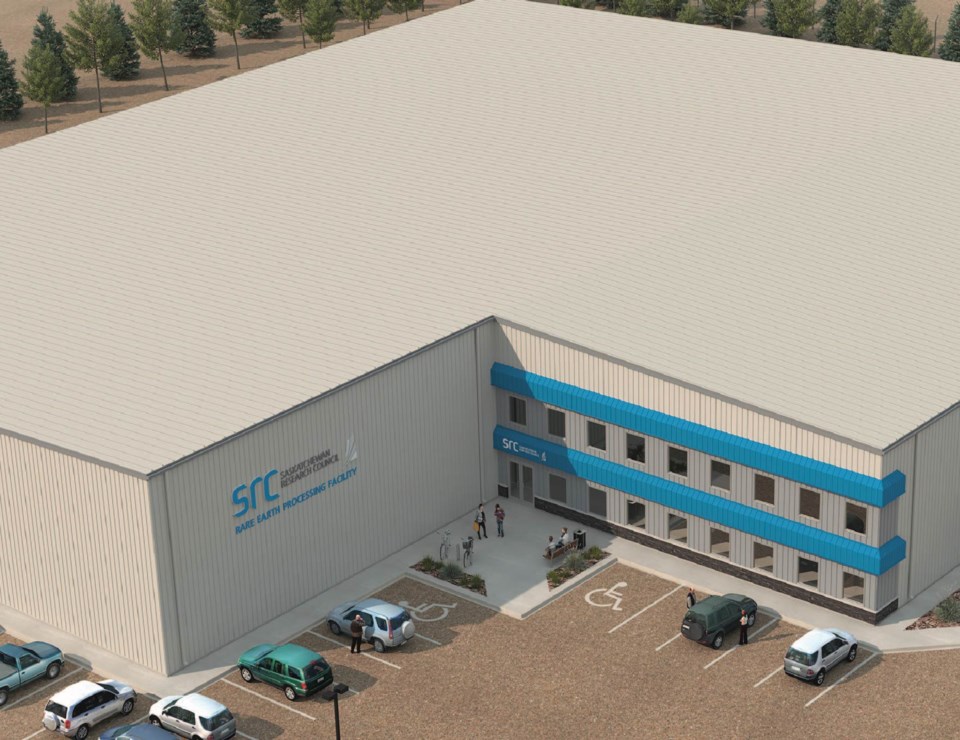The Government of Saskatchewan has announced $31 million in funding for a Rare Earth Processing Facility in Saskatchewan, the first of its kind in Canada.
Rare earths include elements that are key to many 21st century technologies, especially when it comes to rechargeable batteries. Rare earth processing is currently dominated by China, which holds an estimated 90 per cent of the global market, but Saskatchewan is one of the few places on earth where a number of the rare elements are found.
The processing facility will be owned and operated by the Saskatchewan Research Council (SRC), and will be more than 69,000 square feet in size. It will be built in Saskatoon.
Premier Scott Moe said the money will be used for the design, construction and commissioning of highly specialized equipment required for the processes.
“It will form the basis for future commercial rare earth resources management in Saskatchewan,” he said.
The premier said it will be the first-of-its-kind in Canada and will begin to establish a Rare Earth Element (REE) supply chain in Saskatchewan, forming an industry model for future commercial REE resource expansion in the province.
Global demand for REEs is expected to increase significantly in the coming decade as demand for electric vehicles, renewable power generation and all forms of electronics increases.
In making the announcement in Saskatoon, Premier Scott Moe alluded to the launch of the potash and uranium industries in Saskatchewan, or the first oil strike, which grew into world-class resources.
“As we look ahead, rare earth elements are going to play a major role in powering the 21st century. And Saskatchewan, our province, is rich in these incredibly valuable minerals,” Moe said.
Canada is in the early stages of developing the industry, but it’s one with huge potential, he said, where Saskatchewan is “ideally situated.”
“Saskatchewan’s new Rare Earth Processing Facility will be a catalyst to stimulate the resource sector in Saskatchewan and across Canada, providing the early-stage supply chain needed to generate cash-flow, investment and industrial growth of the sector,” Moe said in a release “It will also help ensure the competitiveness of Saskatchewan as we focus on our economic recovery and grow our province over the next decade.”
He pointed out that developing rare earth elements in Canada will reduce reliance on China, the world’s leading producer of these elements.
The conversion of REE ore to individual REE products is done in two main stages. The first is the concentration of ore to mixed REE Carbonate. The second is the more complex separation stage that converts the mixed REE Carbonate to commercial pure-grade REEs. The facility will address both stages of REE processing.
SRC president and CEO Mike Crabtree said the facility is expected to be fully operational in late 2022 with construction beginning this fall.
Where will these rare earths come from? One company is likely Appia Energy Corp., which announced on August 17 it was doing diamond drilling on its “high-grade” Alces Lake property in northern Saskatchewan, 34 kilometres east of Uranium City.
Tom Drivas, Appia’s CEO and president, Appia says the 17,577-hectare Alces Lake property “encompasses some of the highest-grade total and critical rare earth elements (CREE) mineralization in the world. “
CREE is defined as those rare earth elements that are in short-supply and high-demand for use in permanent magnets and modern electronic applications such as electric vehicles and wind turbines, (examples are neodymium (Nd), praseodymium (Pr), dysprosium (Dy) and terbium(Tb).
Phase 2 of the Appia 2020 summer exploration program included 2,000 to 3,000 metres of diamond drilling following the strike extension, reconnaissance drilling on select regional geological and geophysical targets of interest; additional regional ground prospecting, mapping and sampling over areas of interest, excavated overburden removal and outcrop washing.



